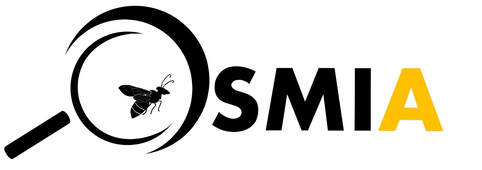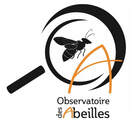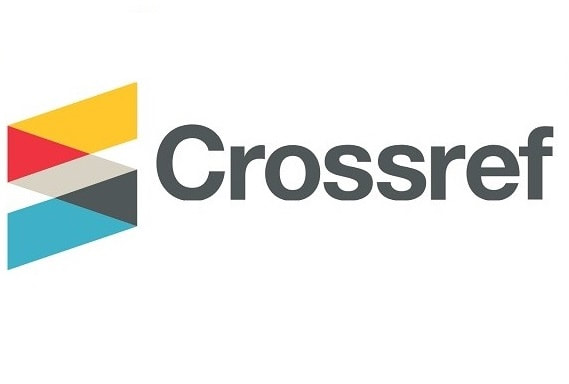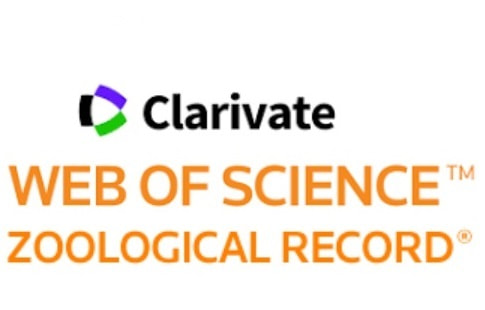Revue d'Hyménoptérologie
Journal of Hymenopterology
ISSN 2727-3806
ARTICLE |
Préférences des fourmis en matière de type et de structure d’habitat : résultats sur quatre tourbières d’Auvergne (Hymenoptera : Formicidae)
|
Luc Belenguier, Marine Kreder, Christophe Galkowski, Thomas Pèlerin, Maxime Sacré
|
Citation
Belenguier, L., M. Kreder, C. Galkowski, T. Pèlerin & M. Sacré (2022). Préférences des fourmis en matière de type et de structure d’habitat : résultats sur quatre tourbières d’Auvergne (Hymenoptera : Formicidae). Osmia, 10: 55–70. https://doi.org/10.47446/OSMIA10.6
Received 22 January 2022 - Accepted 11 November 2022 - Published (online) 12 November 2022
Indexation • Archivage - Archiving
Résumé
Le lien entre habitats et fourmis a été étudié dans le Parc naturel régional des Volcans d’Auvergne pour mieux comprendre les conditions écologiques favorables aux espèces présentes. Le territoire d’étude est constitué de quatre tourbières dans le Puy-de-Dôme. La méthode retenue consiste, au sein de 1149 mailles de 16 m2, en la description de l’habitat (type et hauteur de végétation) et l’inventaire des fourmis par appât alimentaire. Les analyses mettent en évidence des liens entre habitat et myrmécofaune au sein de ces tourbières. Les espèces concernées sont Formica picea Nylander, 1846, Formica lemani Bondroit, 1917, Lasius platythorax Seifert, 1991, Myrmica ruginodis Nylander, 1846 et Myrmica scabrinodis Nylander, 1846. Les éléments bibliographiques relatifs à la préférence écologique des différentes espèces sont globalement confirmés. Formica picea et Myrmica scabrinodis sont particulièrement associées aux habitats de tourbières hautes avec une structure de végétation basse. Formica lemani est retrouvée quasi-exclusivement au sein des prairies mésophiles, avec une préférence pour les végétations plus hautes. Lasius platythorax est retrouvée préférentiellement dans les habitats de tourbières hautes, de bas marais et de tourbières de transition à végétation basse. Seule Myrmica ruginodis est favorisée par des structures de végétation haute et fréquente, préférentiellement les moliniaies et les mégaphorbiaies.
Mots-clefs
Massif central, niche écologique, myrmécofaune, tourbières, hauteur de végétation
Title (translation)
Habitat type and structure preferences in ants: results from four peat bogs in Auvergne (Hymenoptera: Formicidae)
Abstract
The link between habitats and ants was studied in the Parc naturel régional des Volcans d’Auvergne to understand better the ecological conditions favorable to the species. The study area was composed of four peat bogs in the Puy-de-Dôme. The method consisted in the description of the habitat (type and structure) and the inventory of ants by baits within 1149 plots of 16 m2. The analyses highlight links between habitat and myrmecofauna within these peat bogs. The species concerned are Formica picea Nylander, 1846, Formica lemani Bondroit, 1917, Lasius platythorax Seifert, 1991, Myrmica ruginodis Nylander, 1846 and Myrmica scabrinodis Nylander, 1846. The bibliographic elements concerning the ecological preferences of the different species are globally confirmed. Formica picea and Myrmica scabrinodis are particularly associated with raised bog habitats with a low vegetation structure. Formica lemani is found almost exclusively in mesophilic grasslands where it prefers higher vegetation. Lasius plathythorax is found in raised bog and low marsh habitats and transitional bogs in particular, with low vegetation. Only Myrmica ruginodis is favored by tall vegetation structures and preferentially frequents molinia and megaphorbia.
Keywords
Massif central, ecological niche, myrmecofauna, peat bog, vegetation height
Références - References
Belenguier, L., M. Kreder, C. Galkowski, T. Pèlerin & M. Sacré (2022). Préférences des fourmis en matière de type et de structure d’habitat : résultats sur quatre tourbières d’Auvergne (Hymenoptera : Formicidae). Osmia, 10: 55–70. https://doi.org/10.47446/OSMIA10.6
Received 22 January 2022 - Accepted 11 November 2022 - Published (online) 12 November 2022
Indexation • Archivage - Archiving
- DOI: https://doi.org/10.47446/OSMIA10.6
- Zoobank (ICZN): https://zoobank.org/709D80FB-3621-459D-8BFF-6661D992A948
- HAL (CNRS-INRAE): https://hal.archives-ouvertes.fr/hal-03850401
- Zenodo (CERN): https://zenodo.org/record/7316802
Résumé
Le lien entre habitats et fourmis a été étudié dans le Parc naturel régional des Volcans d’Auvergne pour mieux comprendre les conditions écologiques favorables aux espèces présentes. Le territoire d’étude est constitué de quatre tourbières dans le Puy-de-Dôme. La méthode retenue consiste, au sein de 1149 mailles de 16 m2, en la description de l’habitat (type et hauteur de végétation) et l’inventaire des fourmis par appât alimentaire. Les analyses mettent en évidence des liens entre habitat et myrmécofaune au sein de ces tourbières. Les espèces concernées sont Formica picea Nylander, 1846, Formica lemani Bondroit, 1917, Lasius platythorax Seifert, 1991, Myrmica ruginodis Nylander, 1846 et Myrmica scabrinodis Nylander, 1846. Les éléments bibliographiques relatifs à la préférence écologique des différentes espèces sont globalement confirmés. Formica picea et Myrmica scabrinodis sont particulièrement associées aux habitats de tourbières hautes avec une structure de végétation basse. Formica lemani est retrouvée quasi-exclusivement au sein des prairies mésophiles, avec une préférence pour les végétations plus hautes. Lasius platythorax est retrouvée préférentiellement dans les habitats de tourbières hautes, de bas marais et de tourbières de transition à végétation basse. Seule Myrmica ruginodis est favorisée par des structures de végétation haute et fréquente, préférentiellement les moliniaies et les mégaphorbiaies.
Mots-clefs
Massif central, niche écologique, myrmécofaune, tourbières, hauteur de végétation
Title (translation)
Habitat type and structure preferences in ants: results from four peat bogs in Auvergne (Hymenoptera: Formicidae)
Abstract
The link between habitats and ants was studied in the Parc naturel régional des Volcans d’Auvergne to understand better the ecological conditions favorable to the species. The study area was composed of four peat bogs in the Puy-de-Dôme. The method consisted in the description of the habitat (type and structure) and the inventory of ants by baits within 1149 plots of 16 m2. The analyses highlight links between habitat and myrmecofauna within these peat bogs. The species concerned are Formica picea Nylander, 1846, Formica lemani Bondroit, 1917, Lasius platythorax Seifert, 1991, Myrmica ruginodis Nylander, 1846 and Myrmica scabrinodis Nylander, 1846. The bibliographic elements concerning the ecological preferences of the different species are globally confirmed. Formica picea and Myrmica scabrinodis are particularly associated with raised bog habitats with a low vegetation structure. Formica lemani is found almost exclusively in mesophilic grasslands where it prefers higher vegetation. Lasius plathythorax is found in raised bog and low marsh habitats and transitional bogs in particular, with low vegetation. Only Myrmica ruginodis is favored by tall vegetation structures and preferentially frequents molinia and megaphorbia.
Keywords
Massif central, ecological niche, myrmecofauna, peat bog, vegetation height
Références - References
- Andersen, A. N. (2019). Responses of ant communities to disturbance: Five principles for understanding the disturbance dynamics of a globally dominant faunal group. Journal of Animal Ecology, 88(3): 350–362. https://doi.org/10.1111/1365-2656.12907
- Belenguier, L., M. Kreder, V. Lombard, M. Poussin & C. Galkowski (2020). Densité de nids de Myrmica en tourbière : exemple de la tourbière de Jouvion (Puy-de-Dôme). BIOM, 1(1): 35–48. https://doi.org/10.18145/biom.v1i1.255
- Belenguier, L., M. Kreder, P. Bachelard, T. Delsinne, V. Lombard, M. Poussin, A. Soissons & C. Galkowski (2018). Contribution à la connaissance des fourmis d’Auvergne : premier inventaire et répartition des fourmis de zones humides (Hymenoptera Formicidae). Bulletin de la Société linnéenne de Bordeaux, 153/NS 46(2–4): 221–234. https://www.researchgate.net/publication/331071432_Contribution_a_la_connaissance_des_fourmis_d%27Auvergne_premier_inventaire_et_repartition_des_fourmis_de_zones_humides_Hymenoptera_Formicidae [accessed 01 January 2022]
- Bernadou, A., R. Céréghino, H. Barcet, M. Combe, X. Espadaler, & V. Fourcassié (2013). Physical and land‐cover variables influence ant functional groups and species diversity along elevational gradients. Landscape Ecology, 28(7): 1387–1400. http://doi.org/10.1007/s10980-013-9892-y
- Bezděčková, K. & P. Bezděčka (2007). Formica picea Nylander, 1846 (Hymenoptera: Formicidae) v centrální části Českomoravské vrchoviny. Acta rerum naturalium, 3: 23–28. https://adoc.pub/formica-picea-nylander-1846-hymenoptera-formicidae-v-central.html
- Bezděčková, K. & P. Bezděčka (2010). Mravenec rašelinný (Formica picea) ve středních Čechách. Bohemia centralis, 30: 115–120. https://adoc.pub/mravenec-raelinny-formica-picea-ve-stednich-echach.html [accessed 01 January 2022]
- Blatrix, R., C. Galkowski, C. Lebas & P. Wegnez (2013). Guide des fourmis de France. Delachaux et Niestlé, Paris, 287 pp.
- Blatrix, R., C. Lebas, C. Galkowski, P. Wegnez, R. Pimenta, D. Morichon (2016). Vegetation cover and elevation drive diversity and composition of ant communities (Hymenoptera: Formicidae) in a Mediterranean ecosystem. Myrmecological News, 22: 119–127. https://myrmecologicalnews.org/cms/index.php?option=com_content&view=category&id=633&Itemid=366 [accessed 01 January 2022]
- Boitier, E. (2004). Caractérisation écologique et faunistique des peuplements d'orthoptères en montagne auvergnate. Matériaux Orthoptériques et Entomocénotiques, 9: 43–78. https://ascete.org/wp-content/uploads/2021/04/MOE_09_BOITIER.pdf [accessed 01 January 2022]
- Czechowski, W., A. Radchenko & W. Czechowska (2002). The ants (Hymenoptera, Formicidae) of Poland. Museum and Institute of Zoology, Warszawa (Poland), 200 pp. https://www.antwiki.org/wiki/images/f/f4/Czechowski%2C_W.%2C_Radchenko%2C_A._et_al._2002._The_ants_of_Poland.pdf [accessed 01 January 2022]
- Delsinne, T. (2019). Inventaire des fourmis (Hymenoptera : Formicidae) de la Réserve Naturelle Nationale de Chastreix-Sancy. Rapport réalisé par la Société d’Histoire Naturelle Alcide d’Orbigny pour le Syndicat Mixte du Parc Naturel Régional des Volcans d’Auvergne (RNNCS), 83 pp. https://www.researchgate.net/publication/358303148_Inventaire_des_fourmis_Hymenoptera_Formicidae_de_la_Reserve_Naturelle_Nationale_de_Chastreix-Sancy [accessed 01 January 2022]
- Elmes, G. W. & J. A. Thomas (1987). Le genre Maculinea. Les papillons de jour et leurs biotopes. Espèces – Dangers qui les menacent – Protection. Ligue suisse pour la protection de la nature, Bâle (Switzerland), 512 pp.
- Elmes, G. W., J. A. Thomas, J. C. Wardlaw, M. E. Hochberg, R. T. Clarke & D. J. Simcox (1998). The ecology of Myrmica ants in relation to the conservation of Maculinea butterflies. Journal of Insect Conservation, 2(1): 67–78. https://doi.org/10.1023/A:1009696823965
- Galkowski, C. & C. Lebas (2015). Guide d’identification des fourmis du genre Myrmica. Studio Pixart SRL Unipersonale. DREAL Auvergne, Clermont-Ferrand, et Antarea, Canohès (France), 56 pp.
- Glaser, F. (2016). Artenspektrum, Habitatbindung und naturschutzfachliche Bedeutung von Ameisen (Hymenoptera, Formicidae) am Stutzberg (Vorarlberg, Österreich). Inatura – Forschung online, 34: 26 pp. https://www.inatura.at/forschung-online/ForschOn_2016_034_0001-0026.pdf [accessed 01 January 2022]
- Hoffmann, B. D. (2010). Using ants for rangeland monitoring: global patterns in the responses of ant communities to grazing. Ecological Indicators, 10(2) : 105–111. https://doi.org/10.1016/j.ecolind.2009.04.016
- Hölldobler, E. & O. Wilson (1990). The Ants. Springer, Berlin, 732 pp.
- Kaufmann, B., J.-L. Mercier, R. Itrac-Bruneau & G. Chmargounof (2014). Protocole d’échantillonnage simple permettant d’évaluer la présence et l’importance des Myrmica au sein des communautés de fourmis. Plan National d’Actions en faveur des Maculinea. Université Claude Bernard Lyon I, Université François Rabelais Tours, Office pour les insectes et leur environnement, Guyancourt (France), 6 pp. https://maculinea.pnaopie.fr/wp-content/uploads/2010/11/Protocole_terrain_fourmis-h%C3%B4tes_Maculinea_20-05-2014_VF.pdf [accessed 01 January 2022]
- Lara, C., E. Martínez-Bolaños, K. López-Vázquez, C. Díaz-Castelazo, C. Castillo-Guevara, M. Cuautle (2020). Effect of agricultural land use change on the structure of a temperate forest ant–plant interaction network. Entomological Science, 23(2): 128–141. https://doi.org/10.1111/ens.12407
- Lassau, S & D. Hochuli (2004). Effects of habitat complexity on ant assemblages. Ecography, 27(2): 157–164. https://doi.org/10.1111/j.0906-7590.2004.03675.x
- Lebas, C. (2009). Clé de reconnaissance des fourmis de France. Personal website. http://cle.fourmis.free.fr [accessed September 2016]
- Mabelis, A. A. & J. P. Chardon (2005). Survival of the Black bog ant (Formica transkaucasica Nasanov) in relation to the fragmentation of its habitat. Journal of Insect Conservation, 9(2): 95–108. https://doi.org/10.1007/s10841-004-5987-8
- Mabelis, A. A., & J. Korczynska (2012). Can the black bog ant (Formica picea Nylander) survive in the Bieszczady National Park (SE Poland). Fragmenta Faunistica, 55(2): 123–130. https://doi.org/10.3161/00159301FF2012.55.2.123
- Mauda, E. A., G. S. Joseph, C. L. Seymour, T. C. Munyai, C. Thinandavha & S. H. Foord (2018). Changes in landuse alter ant diversity, assemblages and dominant functional traits in African savannas. Biodiversity and Conservation, 27(4): 947–965. https://doi.org/10.1007/s10531-017-1474-x
- Munyai, T. C. & S. H. Foord (2012). Ants on a mountain: spatial, environmental and habitat associations along an altitudinal transect in a centre of endemism. Journal of Insect Conservation, 16(5): 677–695. https://doi.org/10.1007/s10841-011-9449-9
- Pacheco, R. & H. L. Vasconcelos (2012). Habitat diversity enhances ant diversity in a naturally heterogeneous Brazilian landscape. Biodiversity and Conservation, 21(3): 797–809. https://doi.org/10.1007/s10531-011-0221-y
- Passera, L. & Aron S. (2005). Les Fourmis. Comportement, Organisation Sociale, Évolution. Les Presses Scientifiques du CNRC, Ottawa (Canada), 459 pp.
- Punttila, P., O. Autio, J. S. Kotiaho, D. J. Kotze, O. J. Loukola, N. Noreika, A. Vuori & K. Vep-Säläinen (2016). The effects of drainage and restoration of pine mires on habitat structure, vegetation and ants. Silva Fennica, 50(2): article id 1462, 36 pp. https://doi.org/10.14214/sf.1462
- Rees, S. D. (2006). Conservation genetics and ecology of the endangered Black Bog Ant, Formica picea. PhD thesis, Cardiff University (United Kingdom), 192 pp. https://orca.cardiff.ac.uk/id/eprint/56197/1/U584972.pdf [accessed 01 January 2022]
- Rees, S. D., Orledge G. M., Bruford M. W. & A. F. G. Bourke (2010). Genetic structure of the Black Bog Ant (Formica picea Nylander) in the United Kingdom. Conservation Genetics, 11(3): 823–834. https://doi.org/10.1007/s10592-009-9915-z
- Rozier, Y. (1999). Contribution à l'étude de la Biologie de la Conservation de Maculinea sp. (Lepidoptera : Lycaenidae) dans les zones humides de la vallée du Haut-Rhône. Laboratoire de Biométrie et Biologie évolutive (UMR CNRS 5558), Université Claude Bernard Lyon I, 230 pp. http://maculinea.pnaopie.fr/wp-content/uploads/2013/06/ROZIER-1999-Th%C3%A8se-biologie-conservation-Maculinea-vall%C3%A9e-Haut-Rh%C3%B4ne.pdf [accessed 01 January 2022]
- Seifert, B. (1988). A taxonomic revision of the Myrmica species of Europe, Asia Minor, and Caucasia (Hymenoptera, Formicidae). Abhandlungen und Berichte des Naturkundemuseums Görlitz, 62(3): 1–75. https://doi.org/10.5281/zenodo.24610
- Seifert, B. (2004). The ‘Black Bog Ant’ Formica picea Nylander, 1846 – a species different from Formica candida Smith, 1878 (Hymenoptera: Formicidae). Myrmecologische Nachrichten, 6: 29–38. http://antbase.org/ants/publications/20326/20326_0038.pdf [accessed 01 January 2022]
- Souza-Campana, D. R., R. R. Silva, T. T. Fernandes, O. G. M. Silva, L. P. Saad & M. S. C. Morini (2017). Twigs in the leaf litter as ant habitats in different vegetation habitats in southeastern Brazil. Tropical Conservation Science, 10: 1–12. https://doi.org/10.1177/1940082917710617
- Vepsäläinen, K., R. Savolainen, J. Tiainen & J. Vilén (2000). Successional changes of ant assemblages: from virgin and ditched bogs to forests. Annales Zoologici Fennici, 37(3): 135–149. http://www.sekj.org/PDF/anzf37/anzf37-135p.pdf [accessed 01 January 2022]










